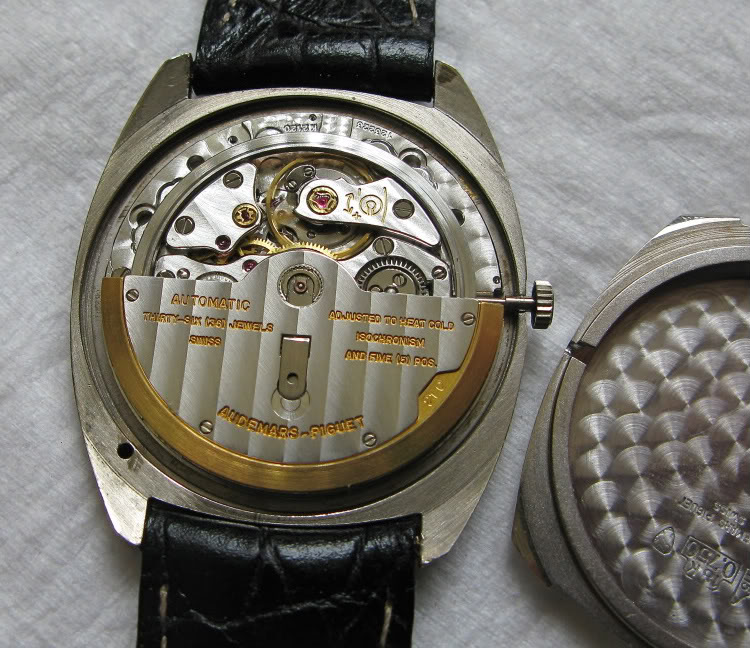Time Exposure
·Many Universal watches are collectible: calendars and chronographs, Pol-a/e-routers, etc. Martel has earned much respect as a manufacturer of high quality movements. But a question came up as I discussed watches with a like-minded (scary!) colleague:
How does a non-complicated, non-Genta designed Universal (Martel?) movement compare to other manufacturers (like Longines)?
I was wearing a Longines automatic at the time.
I have always accepted that Universal was a quality timepiece. I have even heard of it referred to as the "poor man's Patek." I believe this was because the Henri Stern Agency in the United States distributed only Patek and Universal, but I also connected a quality factor (whether fact or perception).
I don't recall seeing much (any) awards for exceptional Observatory testing results, but I'm not certain. Of course, this may suggest that, like IWC, they simply did not submit movements for testing. I do not have access to Sala's book (which might answer my question or at least provide the basis for an opinion).
So from the Golden Age of Wristwatches (say, 1947-ish to 1966-ish), would you rather have had a time-only, three hand Universal over a Longines? A micro-rotor Universal (forgot the reference number) or a Longines caliber 29x/34x/35x?
I'd love to know your opinion of the "Golden Age" top ten, but that seems like a topic many here will not touch (maybe that "other" forum where I can ask if my Rolex Deep Sea makes me look fat...)
😀
How does a non-complicated, non-Genta designed Universal (Martel?) movement compare to other manufacturers (like Longines)?
I was wearing a Longines automatic at the time.
I have always accepted that Universal was a quality timepiece. I have even heard of it referred to as the "poor man's Patek." I believe this was because the Henri Stern Agency in the United States distributed only Patek and Universal, but I also connected a quality factor (whether fact or perception).
I don't recall seeing much (any) awards for exceptional Observatory testing results, but I'm not certain. Of course, this may suggest that, like IWC, they simply did not submit movements for testing. I do not have access to Sala's book (which might answer my question or at least provide the basis for an opinion).
So from the Golden Age of Wristwatches (say, 1947-ish to 1966-ish), would you rather have had a time-only, three hand Universal over a Longines? A micro-rotor Universal (forgot the reference number) or a Longines caliber 29x/34x/35x?
I'd love to know your opinion of the "Golden Age" top ten, but that seems like a topic many here will not touch (maybe that "other" forum where I can ask if my Rolex Deep Sea makes me look fat...)
😀










